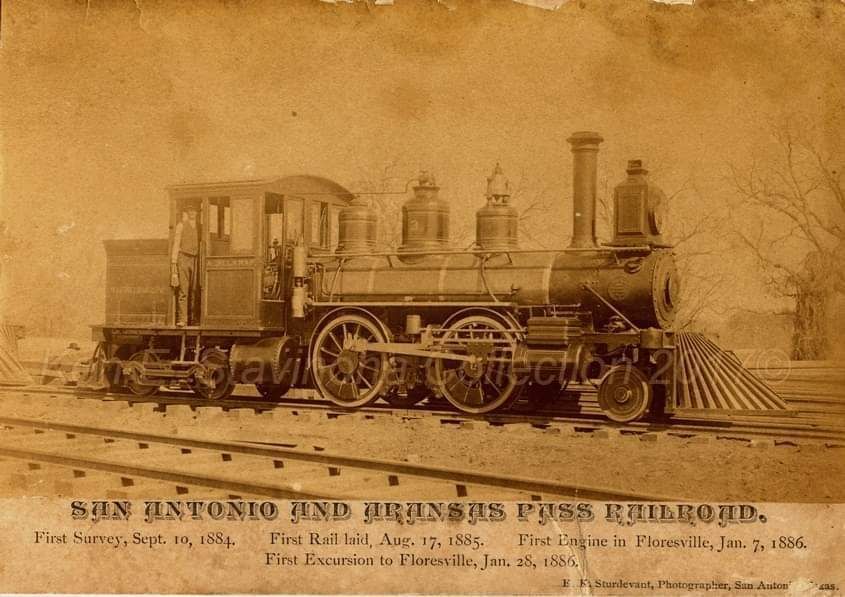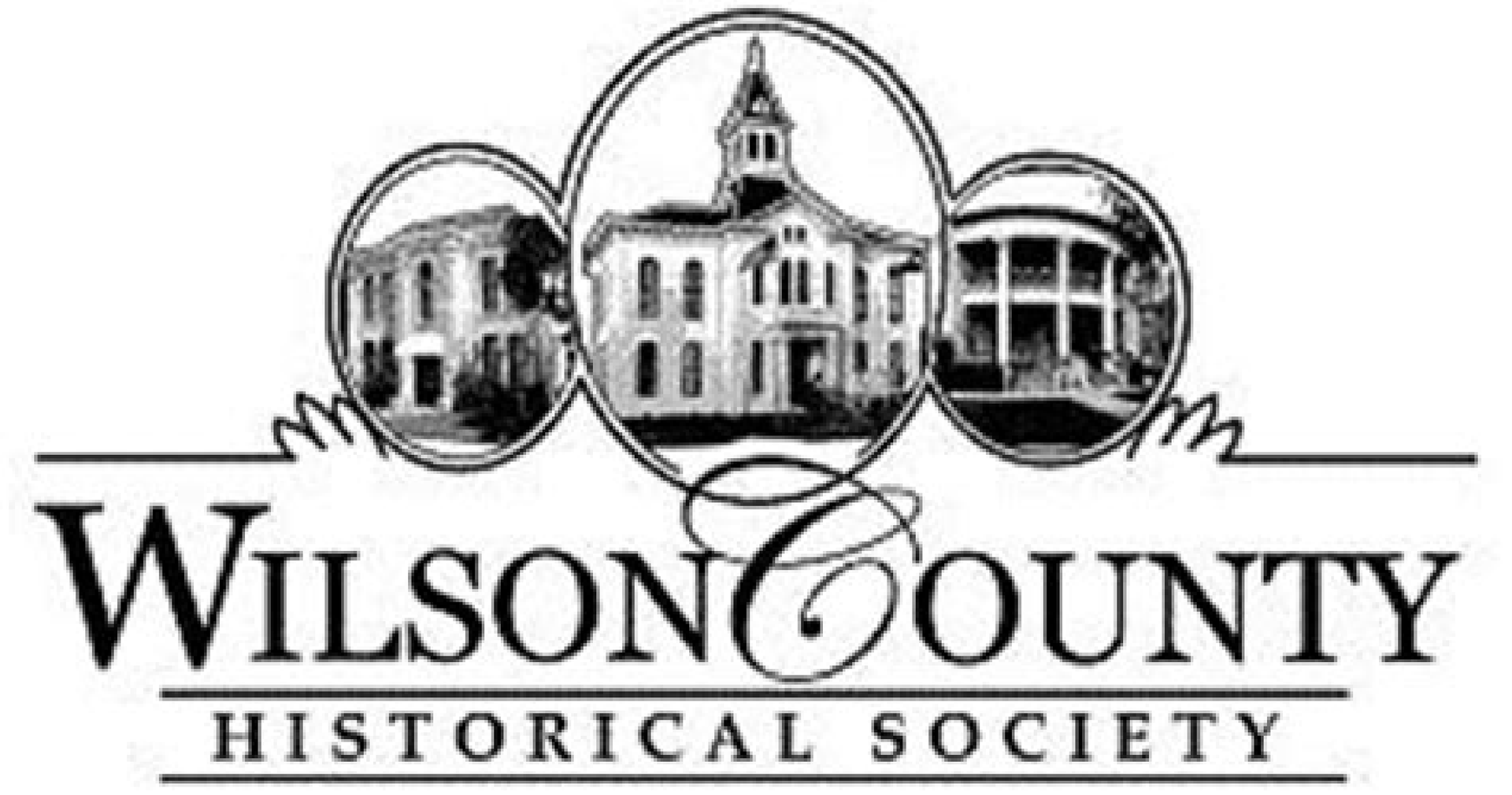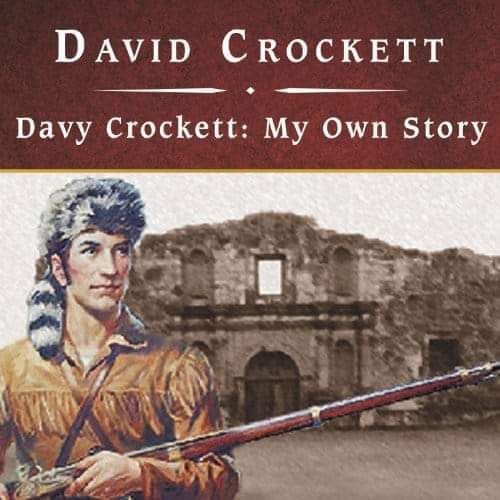The "DAVY CROCKETT" Train's.... sound was one many loved to hear in nightime.There were few businesses in Floresville in 1885, but things were about to change. As the Lodi Ferry had made a crossroads community of Lodi, the coming of the railroad caused significant changes in Lodi and Floresville. The San Antonio and Aransas Pass Railroad, affectionately remembered as "SAAP", started laying tract outside of San Antonio in 1885. (87)
Uriah Lott was the driving force behind the SAAP, and it was chartered on 8/28/1884. It was an independent railroad company until 1890. It started in San Antonio, Texas and Floresville was the first town the SAAP reached. Uriah Lott was short of funds but he was able to find a wealthy backer in Miffin Kenedy of Corpus Christi. The thing that distinguishes Floresville, Lodi and the area around them from other areas is that the railroad purchased land from citizens for the tracks. In most places, the need for the railroad was so great that land was given as a carrot to induce the railroad to come to a town. Francisco Ximenes and Juan Jose De la Zerda, like some other citizens of Lodi and Floresville, sold land for one dollar, to be used by the railroad. Some people sold the land at market price. The railroad tracks were laid along side the San Antonio and La Bahia Road. The land owners also asked for a depot to be built with in a short distance of the courthouse.
SAAP had a large impact on the development of Floresville. Floresville began to grow in anticipation of the railroad. In 1885, it had a population of 400 and by 1890, it had grown to 1500. (88) Trains operated on steam in this era and they needed to stop frequently to take on water. Water was readily available to the railroad. On January 7, 1886, residents of Floresville and Lodi heard the whistle of a locomotive. The SAAP Railroad had come to town and it was met by happy people and a big celebration.
The trains were given interesting names. One of the trains serving Floresville and Lodi was called the "Davy Crockett". The Davy Crockett was a night train from Corpus Christi to San Antonio. Local residents set their clocks by the Davy Crockett. In 1898, the train was used to carry Teddy Roosevelt's "Rough Riders" from San Antonio to Corpus Christi. They were on their way to Puerto Rico where they achieved fame in the Battle of San Juan Hill. (89)
The depot was built of lumber and had three loading platforms. It was established in the Lodi area. Floresville was growing and changing. Lodi was also facing a change. There was less focus on the road traffic and more on the railroad. Saloons, restaurants and other businesses began to move near the Railroad Depot. Lodi's industry, its stores and its workers needed to be closer to the Railroad Depot.
Businesses around the depot were dedicated to the swift processing and packaging of fruit and vegetables. These items were delivered to the train by ox drawn carts or wagons directly from the farms. Wilson County honey and bees were sent by rail. Cattle pens were established to hold cattle until they were shipped out. (90) There were storage houses, such as the Railroad Beer Warehouse, now located on South Second Street. The Floresville Creamery was located near the Railroad Depot in 1908. (91)
A map of the depot area in 1952, shows Seager Gin Company, which was situated between First Street and Goliad Road. The map shows covered platforms for cotton and other products. Stock pens were built for livestock. There were saloons, merchandise stores, cold drink stands, and other small businesses. J. N. Flores and brothers had a store there. People were employed to keep freight moving. (92)
In an interview with Colonel Jesse Perez on 3/11/2008, he stated, "A hub of activity and work surrounded the railroad depot. The work involved the processing and preparation of Wilson County agricultural products. Cotton and corn was transported to the loading docks. Fields containing watermelons and peanuts were harvested and transported to the depot loading docks. Fields of onions, tomatoes, potatoes and green vegetables were picked and hauled to the depot and processed for the box cars. In the early days of SAAP's history, these products were hauled by carts or wagons pulled by oxen or mules. With the advent of the automobile, produce was hauled in trucks. Loading docks still exist near the depot today. In the early 1900s, as many as six passenger trains per day were on the tracks. (93)
In 1925, the SAAP Railroad Line was sold to Southern Pacific and it was busy hauling freight, cattle, cotton and passengers. During WW II, the line was less active. Passenger service was discontinued in 1952. The automobile was readily available. The last train to roll over the tracts was in 1993. (94) On January twenty-ninth, 1998, the Floresville Chronicle – Journal reported that that the railroad track was being removed. (95)
The Railroad Depot was moved to a local ranch. With the passing of the depot and the produce processing operations, the stores that served the predominately Hispanic residents and the bars they would frequent in the evening are gone. Colonel Jesse Perez, a former resident of Lodi, stated his thoughts on the passing of the railroad in Texas Transportation Museum on Line, "Gone is the music and the lively community. (Courtesy of Wilson County Historian Mark Cameron)



